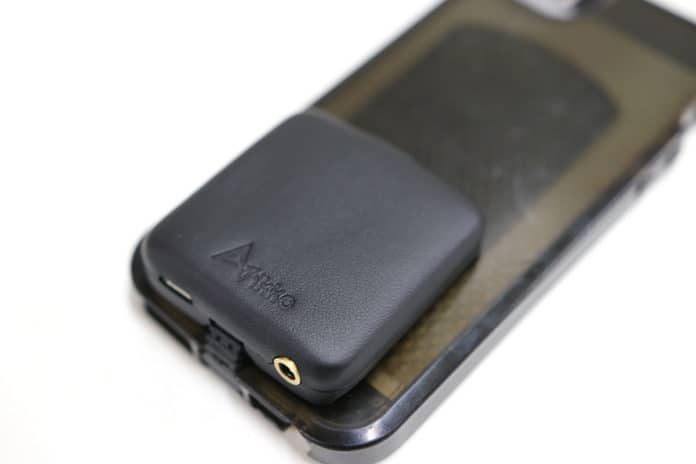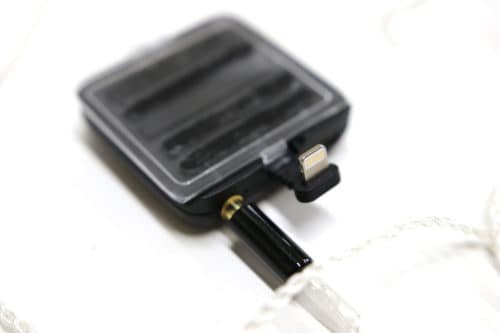Ikko announced the launch of the ITM05’s crowdfunding page a few weeks ago, but today MajorHifi opens our own demo unit to test and review. Set to retail at $219 (with an early-bird price of $99 on IndieGogo), what does this DAC/Amp have to offer besides the ultra-portable design? Let’s find out in this Ikko ITM05 Review.
Ikko ITM05 Music Patch Review
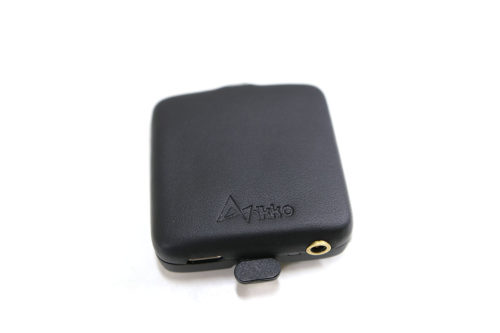
Design
If you couldn’t already tell from the pictures, the aptly named ITM05 ‘Music Patch’ is a portable DAC/Amp that deviates from the standard USB-stick design. It’s a thin square shape reminiscent of the much cheaper FiiO A1. But instead clipping to your shirt pocket like the A1, the ITM05 adheres directly to the back of your phone by reusable adhesive strips.
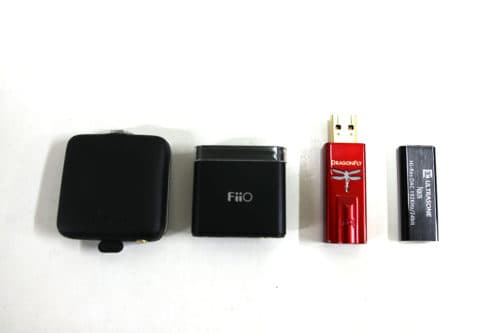
The ITM05’s main connection apparently works with both Lightning and USB-C, although I didn’t have any Androids handy to try it out. Once connected to your phone, headphones are plugged into either the ITM05’s 3.5mm output or the balanced 2.5mm output. Plus you can still charge your phone using the lightning / USB-C input.
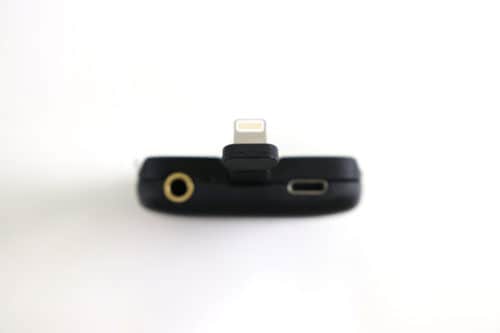
Attached to the back of my iPhone, the Music Patch keeps a pleasantly low profile, and is less cumbersome than using a USB DAC and the corresponding cable. The built-in connector extends like a scorpion’s tail directly to my Phone’s port; no extra wires or shoddy connections.
The ITM05 comes finished in either black or white imitation leather, and looks far classier than your standard USB-DAC. My sole concern with the physical design is the durability of the adhesive strips on the back; I wonder how many times they can be used before losing their stick (UPDATE: the ITM05 does come with backup strips).
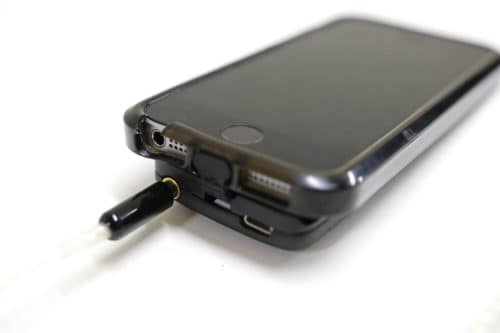
Specs
The ITM05 uses two CS43198 DAC chips, and boasts a distortion rating of only .0008%. The output of the 3.5mm and 2.5mm jacks are 1.8V and 2.0V, respectively.
While using the ITM05, my Phone’s battery did drain slightly faster than normal. However, the power draw seemed on par with other portable DAC/Amps in the price range.
Sound
To understand the sound of the ITM05, I’ll do a side-by-side comparison with 2 other DAC/Amps of similar size and price: the Ultrasone Naos and the DragonFly Red. I’ll be testing them with IEMs (the Kinera Odin) to match the power and portability of the DACs, and also because IEMs are what I myself would walk around with. Lossless audio provided by Tidal.
The ITM05 has an extremely smooth sound profile with an emphasis on the upper midrange. Instrument clarity, separation, and left-to-right soundstage are all noticeably improved while using it. Without it, my iPhone audio sounds grainier in the high-end, and duller overall. There is a subtle low frequency boost, but the sub bass is largely left alone. Here’s how it fares against the competition:
ITM05 vs. DragonFly Red
These two units share an emphasis on the midrange, but the ITM05 feels cleaner and more fluid than the DragonFly Red. At louder volumes especially, the DragonFly can feel harsh by comparison.
Where the DragonFly holds the edge is in a more tactile bass boost, and better depth of space. The ITM05 does improve the soundstage and separation, but the DragonFly Red impressively evokes the feeling of being immersed in and surrounded by the music.
Overall, the DragonFly feels louder and more energetic, while the ITM05 feels smoother and more focused.

ITM05 vs. Naos
The Ultrasone Naos was the cleanest of the 3, narrowly beating out the ITM05. But the Noas lacks the midrange emphasis of its competitors and instead emphasizes the sub-bass and highs.
The ‘V’ shape of the Naos was enough to turn me off, but if you’re looking for the absolute least distortion or the absolute most bass, the Naos is the one for you. But for midrange excitement, the DragonFly Red beats the Naos, and the ITM05 beats both of them.
Conclusion

The ITM05 has a liquid smooth midrange that pulls everything into sharper focus. The DragonFly Red is more exciting (and louder) with a better soundstage, but doesn’t have the same laser-like focus or fluid feel of the ITM05.
At the end of the day, the main selling point on the ITM05 is the application. Being able to adhere it to the back of my iPhone is much more convenient than the conventional USB-stick setup. I didn’t miss using an adapter cable at all.
I do wish the ITM05 added some more bass. And comparing the soundstage to the DragonFly Red can make it feel narrow. But my user experience was so much simpler with the ITM05, I can overlook the differences in sound. If you’re sick of adapter cables wearing out and causing noise, give the Music Patch a try.
Pros- Ultra-smooth and focused midrange, improved clarity, great design.
Cons- Doesn’t add much bass
Get the early-bird pricing on the IndieGogo Page.
MajorHifi may receive commission from retail offers.
MAJORHIFI may receive commissions from retail offers.


